Posts Tagged ‘caregivers’
Eight Steps to Help People with Dementia Feel at Ease during Holiday Gatherings
As we move into the holiday season, Ron and I think often of our parents who went through their last holidays with dementia: my mom Frances and his father Frank. We wanted to share the season with them in ways that felt safe, comfortable, and honoring so we gradually developed these tips. Recently, we shared them via email and had such a great response we also want to share them with you.
Several people wrote, “These tips are good for anyone, not just those with memory loss.”
What great wisdom–to treat each person with the tenderness and consideration that we often reserve for someone going through a physical or emotional illness.
We’d like to share our tips and we’d like to learn from you: what other suggestions do you have for helping people feel connected at gatherings?
Eight Steps to Help People with Dementia Feel at Ease during Holiday Gatherings
- When you’re in a group, help the person with dementia feel safe and comfortable by having a trusted friend or family member stay beside him or her, explaining the proceedings and fielding questions from others, as needed.
- Encourage people to say their name and maintain eye contact when conversing with the person who has dementia.
- Make sure the person can come and go from the group as needed. Create a quiet space where he or she can rest — or appoint a caring person to drive your loved one home when he tires of the festivities.
- Have something special for them to look at, like a family photo album or a favorite magazine.
- Choose background music that is familiar to them, music of their era played in a style they resonate with.
- Prepare a few of their favorite foods.
- When talking to them, don’t correct or contradict or try to pull them into the current reality. Simply listen carefully and let them talk.
- Appreciate them for who they are right now.
Here’s to a holiday seasons filled with grace, gratitude and generosity.
Helping Children Stay Connected with Their Loved Ones Who Have Dementia
How do children internalize the dementia of a beloved family member and what can we do to help them connect and understand the process?
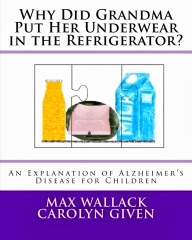
I was so impressed by the book that I asked Max to share more of his insights.
Here is a Q & A featuring some pieces of “Wallack wisdom.”
A. You want to allay the child’s fears so they can continue to have a loving relationship with their relative or friend.
A. I had a hard time understanding why Great Grams might be confused and behave very badly at home and then appear normal when we went out. A doctor told me that sometimes the nerve impulse in the brain jumps the synapse and sometimes it doesn’t. I tried to visualize this in the book with my illustration of the ball player who sometimes makes the catch and sometimes doesn’t. The diseased brain cell cannot always “make the catch.”
A. Her whole life, my great grandmother loved being with children. Being with me gave her great pleasure, even up to the last few days of her life.
A. Just being there can make a difference. Sometimes adult caregivers need a few minutes for themselves. Perhaps they need to cook a meal or take a shower. Even a young child could alert a caregiver if the person who has Alzheimer’s wanders outside or gets into some obvious trouble.
A. I developed a very early sense of responsibility and empathy. I know of other young caregivers who have a sense of caring and responsibility beyond their years. Their parents don’t thrust this responsibility upon them; rather, it is developed as they learn empathy. Children have a natural tendency to want to help. Parents should allow them to participate in the caregiving and not shield them from what is happening.
A. Very young children are often confused about the disease and worry it might be contagious. They need a simple explanation of what is happening. I believe Alzheimer’s disease should be taught in our schools. This could lead to mini support groups for children, perhaps facilitated by a guidance counselor. I hope schools might use “Why Did Grandma Put Her Underwear in the Refrigerator.”
A. People with Alzheimer’s disease are still the same people you have always known. They are “more there” than meets the eye. The trick is to find a means of communicating with them. The creative arts represent a great means of connection, since the area of the brain involved in creativity is one of the last areas affected by the disease.
 Max Wallack’s journey with his grandmother helped him identify his calling. He is a student at Boston University and a Research Intern in the Molecular Psychiatry and Aging Laboratory in the Department of Pharmacology and Experimental Therapeutics at Boston University School of Medicine. He is also the founder of PUZZLES TO REMEMBER. a project that provides puzzles to nursing homes and veterans’ institutions that care for Alzheimer’s and dementia patients.
Max Wallack’s journey with his grandmother helped him identify his calling. He is a student at Boston University and a Research Intern in the Molecular Psychiatry and Aging Laboratory in the Department of Pharmacology and Experimental Therapeutics at Boston University School of Medicine. He is also the founder of PUZZLES TO REMEMBER. a project that provides puzzles to nursing homes and veterans’ institutions that care for Alzheimer’s and dementia patients.
Beware of Caregiver Breakdown: Three Warning Signs and Three Soothing Actions
My stomach hurt most of the time. As I dashed around the house, getting ready to go see Mom in the Memory Care Unit, I frequently bumped into furniture. I found myself drifting away during meetings and unable to concentrate when I sat at the computer to write. And even though I had wonderful, supportive friends, I often felt an aching loneliness. Later, I learned these were normal symptoms of caregiver’s fatigue.
I asked my friend Linda Moore, psychologist, community leader and author of the newly released book, “What’s Wrong with Me?” to tell me more about recognizing and managing such exhaustion. Here are some of her insights.
Three Areas Where Stress Screeches You to a Halt
Physical
“Your body is the early warning system,” Linda says. “But most people try to ignore the on-going tiredness, low energy, muscle spasms, unfamiliar aches and pains, and GI issues.”
Emotional
Often, after I’d spent hours solving problems around Mom’s care, I had a heavy feeling of disconnection and a dull anger. Nothing mattered and I felt sad, rootless and lonely. But I kept going. Caregivers tend to push past such feelings.
Behavioral
“Poor concentration is one common sign of stress,” Linda says. When friends say, “You’re just not acting like yourself,” it’s a cue to slow down and drink a cup of soothing tea, read a short magazine article, or phone a friend. Other stress symptoms include procrastination and isolating yourself.
Fight Breakdown with the MEE Plan
“Meditate, even if it’s just for a minute,” Linda advises.
Sit quietly, count to four as you breathe in and count to six as you breathe out. Watch your thoughts wiggle around. One minute of meditation calms you; five minutes energizes you and 20 minutes of daily meditation can really center you and give you a greater sense of well-being.
Exercise
“Everybody knows it works and no one wants to do it,” Linda says. Even when you’re so tuckered out that your fingernails feel heavy, movement matters. Five minutes just walking around the house or prancing around to “Dancing Queen” can ratchet up your energy. Fifteen minutes of walking can lift your mood. Even a jog up stairs or unloading the dishwasher can shift your energy.
Eat healthy.
Is a banana really as delicious as a dark chocolate truffle? Many would say no. But most would agree, the banana is better for you. Even if you often eat on the run, choose fruits and vegetables to snack on. Throw in salads, whole grains, soups and nuts. And don’t forget the truffle: be sure you indulge every so often in a comfort food you really adore.
Lastly, Linda advises, “Don’t give away your personal power: ask for help when appropriate and learn to say no.” #
Dr. Linda Moore is a psychologist, author, speaker and consultant in Kansas City. She specializes in the psychology of women, stress management and leadership. 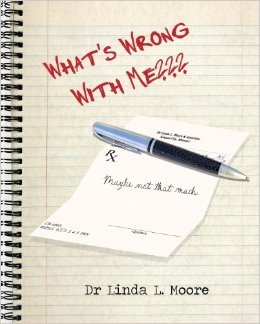

Q 4 U
I bump into furniture when I’m stressed. What are some of your stress signals?
*****
Five Easy Ways to Put Your Heart on the Page: Finding Words for the Caregiver’s Journey
My mother’s Alzheimer’s drove me to write. My writing inspired me to speak.
Over the last years, I have received enormous pleasure from connecting with people all over the world, sharing the stories of finding hope in the caregiver’s journey.
It All Started with Grief
When I initially realized the depth of my mother’s memory loss, I was shattered with grief.
My initial reaction was:
Visit with mom
Drive home, blowing my nose and wiping tears from my cheeks
Misplace my car keys
Stare numbly into space
One day, during the “staring numbly” phase, my partner Ron said, “Are you writing down your feelings?” It was a smart and sensible thing to say; the sort of suggestion I might make to him in a crisis. I was, after all, a writer.
“I don’t feel like writing,” I said.
But his words stayed in my mind. The next day, I slightly altered my behavior:
Visit with mom
Drive home, blowing my nose and wiping tears from my cheeks
Misplace my car keys
Write numbly for an hour
Writing my Way from Grief to Insight
I poured out my fears, confusion, anger and grief. After doing this for a week,
I began noticing how fascinating my visits with Mom were; we were explorers on a wild inner trek.
I began documenting our time together, sometimes even taking notes during my visit. I wrote about the challenges, humor and blessings. I wrote about my conversations with my father, with friends and family and with the aides, the nurses, the social workers. As I wrote, I saw how much hope, promise and energy there was in my new world.
Instead of crying when I drove home, I thought about how I could transform my notes into a meaningful essay. As I shared my work with friends and with my writing critique partners, I realized I was chronicling my mom’s last years and capturing part of our family history.
Five Easy Ways to Bring Your Life to the Page
How do you take a challenging part of your life and bring it to the page?
1. Pour Out Your Feelings.
Give yourself time to feel your emotions, whether it’s through writing, art, music or other.
2. Notice the Details.
Write down the particulars, noting simple concrete facts. You are a researcher collecting data.
3. Uncover the True Story.
Look for the universal meaning in your specific experience. How have you changed? How will the reader change through reading your words?
4. Seek Feedback.
Read the story aloud to someone and see how it sounds. What’s working and what’s missing? Ask colleagues for a professional critique. Think over their advice and decide what is right for you.
5. Share Your Writings.
I was lucky enough to read some of my stories to my mother and father and receive their blessing for my work. Anytime I featured people in a story, I shared it with them to make sure they were comfortable with the material. When they’re comfortable, it’s time to share with friends and a wider audience, if you wish.
Q 4 U
What are some of your writing tips?
Celebrating the Differences: Our Teachers are Everywhere
Part of my journey has been opening myself to love in all its glorious guises. As my mother went deeper into Alzheimer’s, I also feel we went deeper into love, the kind of true emotion that goes beyond words.
I am now deeply in love with another amazing person, my granddaughter Annabelle Rose, who doesn’t yet have the words to express her feelings but whose ability to connect is truly inspiring. 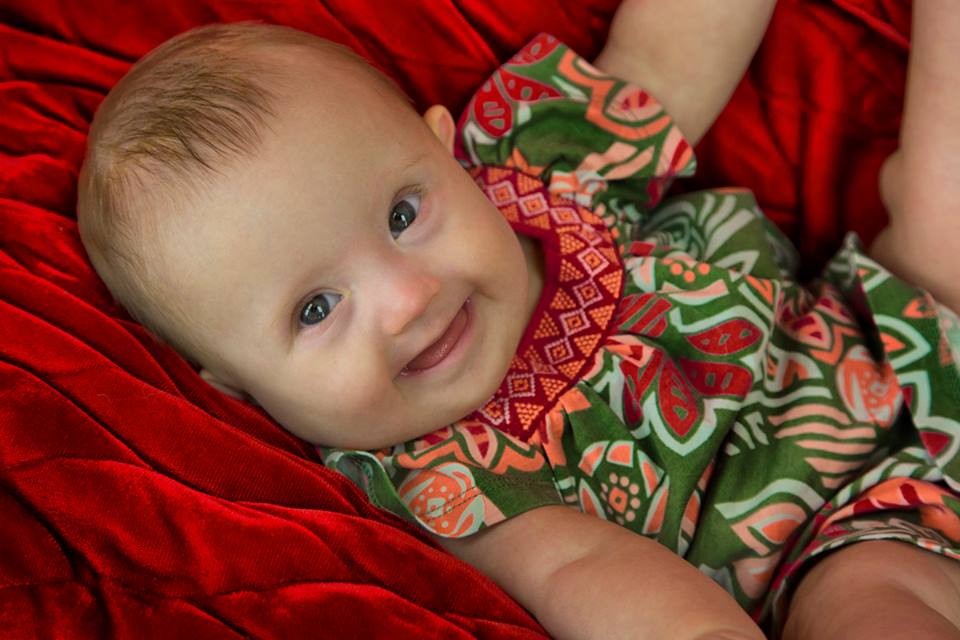
My daughter Sarah wrote this note to Annabelle and I wanted to share it with you. It really captures the essence of how we can appreciate, learn from and celebrate what is extra and unique about every one of us.
Warmly,
Deborah
Sarah’s Journal Entry: October 1, 2013
Today marks the first day of Down Syndrome Awareness month — the first time that I have been aware, as it is Annabelle’s first October. Here is my wish:
Dear Annabelle,
I hope you recognize that having an extra chromosome makes you extra special. I do not want to define you by that addition to your DNA, nor do I wish to minimize the impact that it will have on your life. I believe that you will be able to accomplish great and amazing things. I hope to help you find your passion and to express yourself in every way. I want for you what I want for your brother. I will do everything that I can to give you a solid foundation — early intervention and love. 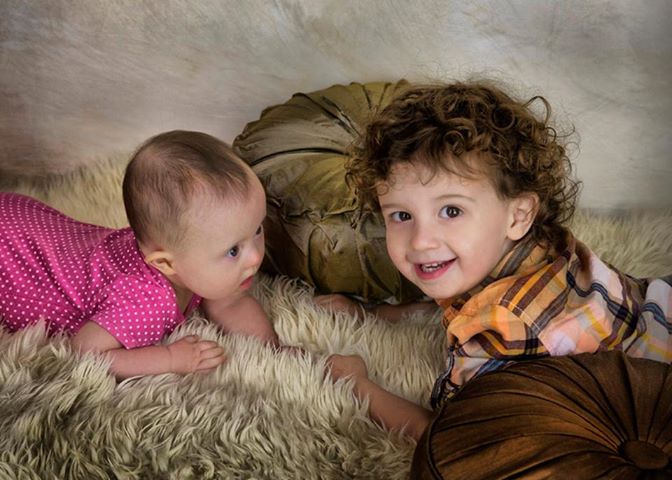
I have celebrated the last 7 months, expressing gratitude for my healthy and happy baby girl. I did not expect a girl. You are a blessing. Being different does not diminish or change that fact. I imagine life will be more of a challenge for you because of that fact. I hope to protect you from any cruelty or ignorance. I will work hard to educate and advocate. I am aware of Down Syndrome. It is with us everyday. But this month, I aim to celebrate.
I believe that you will teach us just as we teach you. I have been forced to put my education and training into practice. I cannot live in the future — none of us knows what it will hold. However, we can plan, prepare, and then be mindful of this moment. Each moment with you is filled with joy and wonder — the sweetness of your smile, the magic of your laugh. I love to be with you. I love to help you get stronger and develop new skills. We are being trained, and the information is amazing. We will learn how to help you in the best possible ways. You have a team dedicated to your health, happiness, and future.
You are different, but you are the same. You have an extra chromosome. You also have the same 46 that we have. You have a patience and sweetness that is hard to define. You have an interest in people and the world around you. You stay awake to watch and observe, refusing to miss any action by napping. When you sleep, you sleep with abandon. You often “talk” during this time. I could write for hours about how much I love you and all the special things that you do.
Your mom.
Sarah
Photo Credits, Ann Brown
Connecting in Long-Term Care: Seven Sure Ways to Have a Great Visit
It wasn’t just an ordinary visit. I walked into the long-term care facility and made my way to the memory care unit. I paused in front of the locked door, pulled a crumpled scrap of paper out of my pocket and tapped the entry code into the keypad. As I walked to my mother’s room, her new home, I felt sad, confused and guilty. How was I going to connect with my mom in this strange new environment?
Eleanor Feldman Barbera, PhD, author of The Savvy Resident’s Guide, has 16 years of experience as a psychologist in long-term care and understands the emotions and confusions family or friends might feel when visiting in a long-term care facility. Here are her tips for having a meaningful connection.
Seven Tips for Visiting a Loved One in a Long-Term Care Facility
Many families find it stressful to visit their loved ones in long-term care, especially if dementia has changed their usual ways of relating. Here are seven ways to make the most of your visits:
- Help the room feel like home by bringing photos and bedspreads, creating an environment that feels more comfortable and familiar to your relative and more pleasant for you to visit. Labeling the photos with names (such as “Oldest son, Sam”) provides reminders in your absence and clues for the staff that are with your loved one daily.
-
Turn off the television or radio and close the door during your time together. When the room is quiet and free of distractions, it’s easier for someone with dementia (and for those with hearing loss) to focus on their visitors.
-
Try to converse at the same height, sitting on beds or chairs rather than standing while your loved one is sitting. Bring in small folding chairs and stash them in a corner if you tend to have lots of visitors. Remember, though, that some people react better to hosting just a couple of guests at a time rather than a possibly loud and confusing crowd.
-
Use memory aides such as photos and magazines of beloved hobbies as conversation starters. Creating a memory book together can be a great way to spend some time, especially if the focus is on enjoying the process and the conversation that comes from it rather than on completing the memory book in a set amount of time.
-
Go with the flow of the conversation, allowing your loved one to talk about what’s on their mind, rather than asking questions they used to be able to answer but no longer can, which is upsetting for everyone. For instance, replace, “Don’t you remember X?” with “Your flower garden was so lovely,” adding details that reflect your appreciation for their abilities and see what response this generates.
-
Find pleasurable activities that don’t involve talking, if that’s beyond your loved ones’ capabilities at this point. Listen to music, hold a private stretching class, go outside and enjoy the sun and the birds. Just be, pleasantly, without expectations.
-
Talk to staff members and to other visiting families and become part of the long-term care community. Media reports to the contrary, most long-term care homes are filled with people who are trying to do the best they can for your loved one under challenging circumstances. They can become your allies, supporters, and teammates in care.
Eleanor Feldman Barbera, PhD is an accomplished speaker and elder-care coach with over 16 years of experience as a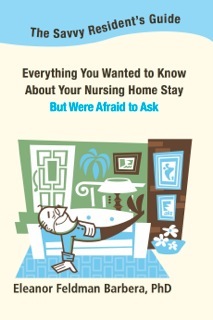 psychologist in long-term care. Read her book, The Savvy Resident’s Guide, for the inside scoop on how nursing homes work and visit her award-winning website, MyBetterNursingHome.com, for more tips on how to thrive in long-term care.
psychologist in long-term care. Read her book, The Savvy Resident’s Guide, for the inside scoop on how nursing homes work and visit her award-winning website, MyBetterNursingHome.com, for more tips on how to thrive in long-term care.
Making a List: Including Fun in the Caregiver’s Journey
“You need to do something fun,” a friend said.
“I’m too tired to think of something fun,” I said.
My parents were going through a particularly hard time; my mother’s behavior had gone beyond the scope of assisted living and they had advised that she go into a psych ward to have her medications re-evaluated. My father was worn to a frazzle and we were both unnerved by Mom’s zombie-like appearance as the doctors tried to figure out the correct combination of medicines. Fun seemed like a word from another planet.
Yet I realized my friend was right: I needed to do something that would cheer me onward.
Creating Fun-Sized Options
So early one morning, before I was tired or confused or sad, I made a list of little items or activities that gave me a sense of well being.
At first, the list was small—I was too brain-worn to think of much:
Eat chocolate.
Read for pleasure.
Do a crossword puzzle.
Walk outside.
Talk with people I cared about.
I crammed the list into my pocket and when I thought of something new, I jotted it down.
During the next week I added:
Listen to Dancing Queen.
Hold a stuffed bear.
Collage.
Go to yoga.
Sleep late.
Dance to Dancing Queen.
Making Time for Fun While Still Being a Very Responsible Person
That weekend, I vowed I would do three things on my list. I ate chocolate (OK, that was an easy one, but I had to start somewhere!), talked with a friend, and read two chapters of a mystery.
I felt lifted up, as renewed as if I’d had four hours in the spa. And I still was there for my parents, my work, and other life responsibilities. So I continued the process of adding to my list and incorporating one fun thing into every day. Sometimes it was only part of a crossword puzzle or creating a three-minute collage while I was on hold with my mother’s doctor. But even those few minutes gave me back a part of myself and allowed me to more fully appreciate my interesting and chaotic life.
Q for U:
How about you — what are the small fun things on your list? And are you giving yourself time to do them?
The Caregiver’s Recipe for Prevention: An Ounce of Spice and a Whole Foods Mediterranean Diet
“My mother has Alzheimer’s. What can I do so I don’t get the disease?”
Frequently worried caregivers ask Marwan Sabbagh, MD, author of The Alzheimer’s Prevention Cookbook: Recipes to Boost Brain Health, that question. Dr. Sabbagh is a geriatric neurologist, dementia specialist and the Research Medical Director of the Banner Sun Health Research Institute in Arizona. He understands the concerns and fears of caregivers and he is able to offer them hope. 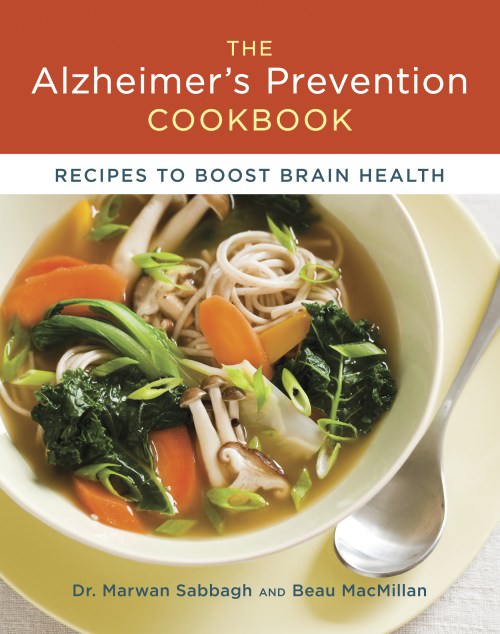
“The changes in the brain that lead to Alzheimer’s or dementia start 25 years before the first day of forgetfulness,” Dr. Sabbagh says. “The dementia is at the end of the disease, not at the beginning.”
The more he researched the impact of spices and food on the brain, the more he realized the importance of diet in boosting brain health.
Foods are More Effective than Supplements in Protecting the Brain
* The nutritional values of food are well researched; the nutritional value of supplements varies widely from company to company.
* The body can break down food into small, transportable molecules that can permeate the brain’s protective barrier and reach the brain with the nutrients still intact; supplements aren’t as easily broken down and often cannot penetrate the blood-brain barrier.
“The road from our mouth to our brain is long and winding. Because of the way we digest food and nutrients, the best source of neurotransmitter precursors is almost always food; supplements are much less reliable,” Dr. Sabbagh writes.
Caregivers Need Nourishing Foods
“Caregivers take the disease on the chin,” Dr. Sabbagh says. “Their stress levels are higher than the people with Alzheimer’s.”
This stress weakens the immune system and puts them at risk for illness and disease.
Five Ways to Boost Your Brain Now
* Spice Up Your Life and Increase your Antioxidants
The spices that add the biggest boost of healing antioxidants include
cloves, oregano, rosemary, thyme, cinnamon and turmeric. Add turmeric to your eggs. Sprinkle cinnamon into your coffee or smoothie. Include rosemary in your salad.
* B is for Brain Health
“The three most important vitamins for brain health are B6, B9 and B12,” Dr. Sabbagh writes.
For B6, eat sunflower and sesame seeds, pistachios, bananas, spinach, and vegetable juices.
For B9, nibble on broccoli, kale, lentils, peas, and strawberries.
For B12, eat eggs, shellfish or fatty fish. For vegetarians, take a supplement.
* Dine Mediterranean Style
Reduce red meat, decrease saturated fats; add more fish and fruits and vegetables. The more fruits and vegetables, the healthier the brain.
* Believe it Can Happen
“You have to make a commitment to incorporate healthy eating into your life,” Dr. Sabbagh advises. “Part of this is psychological. If you believe this is hard, that belief will make it hard. It you believe that a whole foods diet is part of who you are and how you live, you can easily weave healthy eating into your life.”
* Don’t’ Wait: start today.
***
Q for U:
How do you add nourishing foods and spices into your daily diet?
***
For more information about boosting brain health, visit Dr. Sabbagh’s website:
http://www.marwansabbaghmd.com
Read his book The Alzheimer’s Prevention Cookbook: Recipes to Boost Brain Health, written with world-famous chef Beau MacMillan.
A Caregiver’s Gift from Her Mother
Recently, I met Cynthia and her mother, Frances. I was so inspired by their story and I wanted to share it with you.
**
Some people steal away to a day spa so they can slow down and relax. Others take a vacation or immerse themselves in a meditation retreat. Cynthia Robinson, age 61, didn’t have time for any of those options. It was 2010, and as she was trying to build her consulting practice, she realized her 88-year-old mother, who lived alone, had memory problems. When Cynthia took her mother to a neurologist, the diagnosis was mild cognitive impairment, which for many is a precursor to Alzheimer’s.
Cynthia was thrust into the role of primary caregiver.
“Initially, I felt irritated and a little resentful,” she said. “I loved my mother but I didn’t want caring for her to take up so much of my time.”
Deciding What Was Most Important In Life
Cynthia had to decide what was most important. Was it taking care of her mother or building her business? She analyzed her situation; her husband was retired and they could get by on his income.
“I knew I would regret it if I didn’t take care of Mom,” she said. She had another reason: she felt she could be at risk for Alzheimer’s. “I wanted to model caring behavior so my daughters and husband would know how to act if I ever developed this disease,” she said.
Cynthia wanted to think of ways her mom could feel valuable and really loved and she experimented with these concepts:
Slow Down
She slowed down to her mother’s pace. She didn’t bring her computer over to her mom’s house; she didn’t talk on her cell phone or check her emails and texts. “I tried to patiently experience my mom’s world,” she said.
Listen Lovingly and Learn
Even though she sometimes bit her lip in frustration as her mom endlessly repeated the same story, Cynthia practiced really listening to her mom’s tales.
“Once I did this, I heard stories I’d never heard before,” she said. “ I learned some meaningful family history.”
Experience the Sensory Beauty of the Present
“I had never paid attention to the millions of shades of bright green,” Cynthia said. “But Mom notices sensory things and we talk about the colors, the flowers and the trees. She keeps me in the here and now.”
Seek Interesting Solutions
Normally, Cynthia’s mom would never wear a hat. But her long hair was thinning and Cynthia bought her a cute cap. Her mom was delighted by the gift and whenever she wore it, she received compliments.
Find New Common Ground
Cynthia installed birdfeeders at her mom’s house. Enjoying the ever-changing array of birds increased her mom’s quality of life and gave them a new topic of conversation.
Delighting in Her Mother’s Gifts
The more Cynthia slowed down and stayed in the present with her mom, the more she appreciated her mother’s wisdom and serenity. Her mother repeatedly told her, “People are about as cheerful as they make up their minds to be.”
“ My mother once guided me through the experience of being a parent,” Cynthia said. “Now, she’s guiding me in the experience of how to make the best of Alzheimer’s.”
**Who are your unexpected guides? What fascinating lessons are you learning on your journey?


